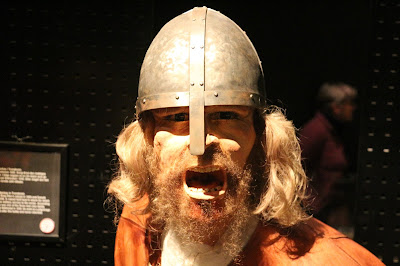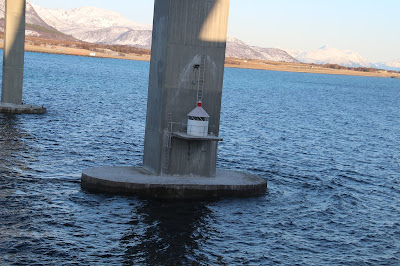The more recent history of Harstad/Trondenes is tragic. During WW2, there was a lot of German activity in the area, with many gun emplacements built along the coast. This was done by the slave labour of POWs, many of whom died under the brutal conditions. The Germans. meticulous as ever, logged every detail on the prisoners' record cards, including how they died. This wall in the museum shows many of the cards of the 1200 or so who died hereabouts.
Although I would have liked to, we didn't visit the cemetery in Harstad where there are 33 Commonwealth burials from WW2. But here's some information from the CWGC website about the graves. "During the Second World War, Norway was of strategic importance to the Germans. Their invasion on 9 April 1940 was sudden and widespread and despite Allied intervention, the entire country was under German occupation by early June. Thereafter, Allied activity in Norway was confined to raids and special operations, with the Commonwealth air forces providing support to Norwegian resistance groups until the German capitulation in May 1945. There are no Commonwealth war cemeteries in Norway, those who died there being buried in civil cemeteries and churchyards. Harstad was used as the military headquarters and main port of disembarkation for the expeditionary force sent to northern Norway in April 1940 and was repeatedly attacked by German aircraft throughout the entire operation. 701 Walrus Squadron of the Fleet Air Arm and 263 Gladiator (Fighter) Squadron operated from Harstad, the latter moving to Bardufoss Aerodrome in May. The graves of those who died in Bardufoss were later transferred to the Commonwealth plot at Harstad. Harstad Cemetery contains 33 Commonwealth burials, one of them unidentified. The cemetery also contains plots of other Allied war graves". |





















No comments:
Post a Comment